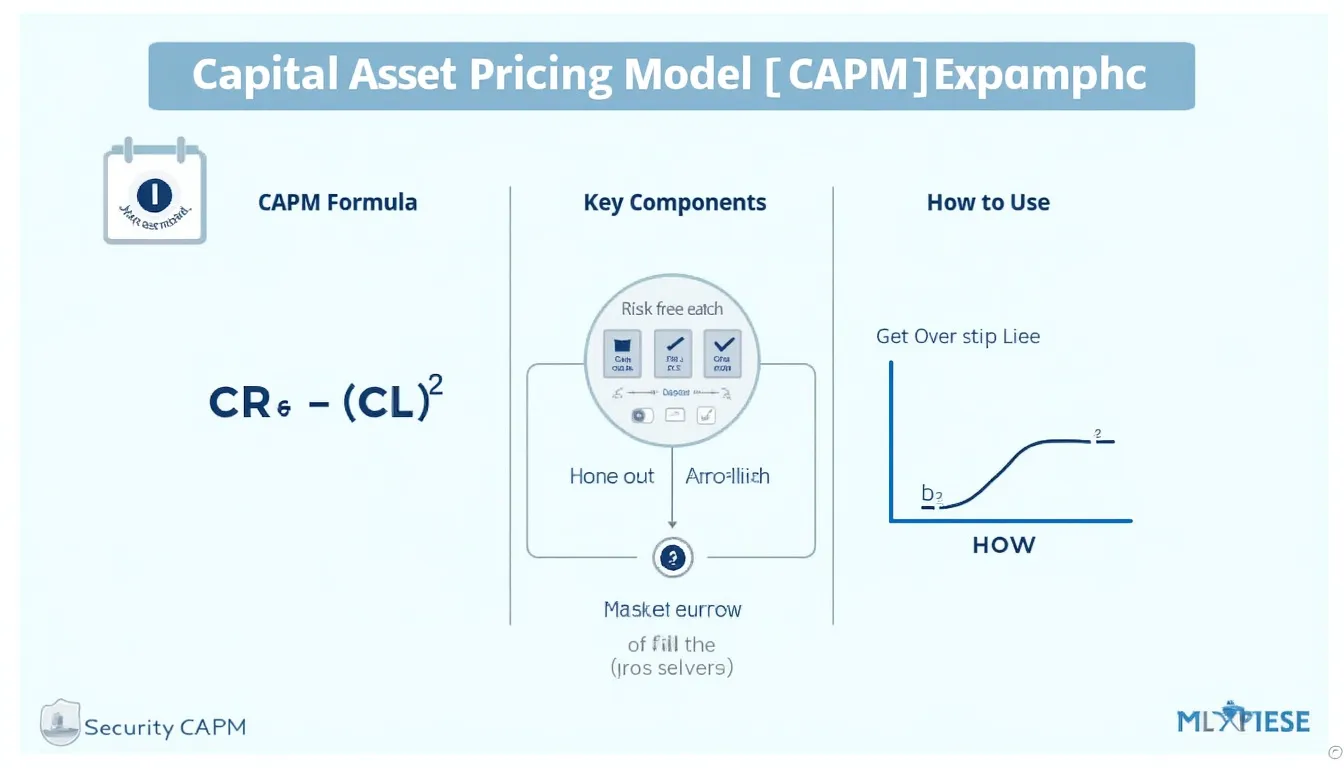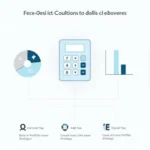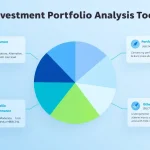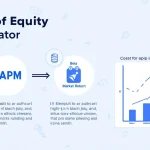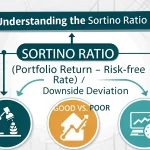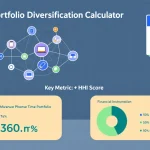Capital Asset Pricing Model Calculator
Is this tool helpful?
How to Use the Capital Asset Pricing Model (CAPM) Calculator Effectively
Our easy-to-use CAPM Calculator helps investors, financial analysts, and portfolio managers estimate the expected return of an asset by analyzing its risk relative to the market. To maximize the benefits of this financial tool, follow these straightforward steps:
- Enter the Risk-Free Interest Rate (%): Provide the current risk-free rate, usually derived from government bond yields. For example, you might input 1.5 for a European government bond or 0.75 for a short-term U.S. Treasury bill.
- Input the Beta Value of the Security: Insert the beta coefficient, which measures the security’s volatility relative to the overall market. Typical beta values might be 0.85 for a defensive stock or 1.6 for an aggressive growth stock.
- Provide the Expected Market Return (%): Enter the anticipated return of the overall market. For instance, you could enter 7.2 as an estimate of the S&P 500’s expected annual return or 6.5 for a broader index.
- Click “Calculate” to Generate Results: The calculator instantly computes the expected return using the CAPM formula, offering a clear insight into potential investment performance.
- Review the Expected Return: The result will be displayed prominently, helping you assess whether the asset offers a suitable return given its risk.
Note: Always ensure that all input values are non-negative for accurate and meaningful results.
Introduction to the Capital Asset Pricing Model Calculator
The Capital Asset Pricing Model (CAPM) Calculator is an essential finance tool designed to assist investors and professionals in estimating the expected return of an investment by quantifying the interplay between risk and reward. This model evaluates how an asset’s systematic risk relates to its potential return, allowing for more informed investment decisions.
With this calculator, you can:
- Quickly calculate expected returns based on current market data and asset risk levels.
- Analyze risk-adjusted performance to compare different assets and portfolio options.
- Make data-driven investment decisions that align with your financial goals and risk tolerance.
- Save time by avoiding complex manual computations.
- Enhance your financial understanding by applying a core principle of modern portfolio theory.
The CAPM Formula Explained
The CAPM formula calculates the expected return of an asset with the following well-established equation:
$$E(R_i) = R_f + \beta_i \times \left(E(R_m) – R_f \right)$$
- E(Ri): Expected return of the asset
- Rf: Risk-free interest rate
- βi: Beta coefficient of the asset
- E(Rm): Expected market return
- E(Rm) – Rf: Market risk premium
Example Calculations Using the CAPM Calculator
To demonstrate practical usage, here are example scenarios showing how the CAPM Calculator estimates expected returns based on given inputs:
Example 1: Evaluating a Consumer Goods Stock
- Risk-Free Rate: 2.0%
- Beta Value: 0.9
- Expected Market Return: 7.5%
Expected Return = 0.02 + 0.9 × (0.075 – 0.02) = 0.02 + 0.9 × 0.055 = 0.02 + 0.0495 = 6.95%
This calculation suggests the consumer goods stock is expected to return 6.95%, accounting for its relative market risk.
Example 2: Assessing a Renewable Energy Company
- Risk-Free Rate: 1.2%
- Beta Value: 1.4
- Expected Market Return: 8.0%
Expected Return = 0.012 + 1.4 × (0.08 – 0.012) = 0.012 + 1.4 × 0.068 = 0.012 + 0.0952 = 10.72%
The renewable energy company, having a higher beta, carries more market risk but also offers a potentially higher expected return of 10.72%.
Benefits of Using the CAPM Calculator for Investment Analysis
Utilizing the CAPM Calculator presents numerous benefits for those seeking precise and informed insights into asset valuation:
- Accurate Risk-Return Estimations: Streamline your financial analysis with dependable expected return figures.
- Comparative Asset Evaluation: Easily compare investment opportunities across different sectors and risk profiles.
- Improved Portfolio Management: Optimize your portfolio allocation by understanding expected returns relative to risk.
- Time Efficiency: Save valuable time by automating complex financial calculations.
- Enhanced Investment Confidence: Make data-driven decisions to align with your risk appetite and investment goals.
Practical Applications of the CAPM Calculator in Finance
1. Stock and Asset Valuation
Use the CAPM Calculator to estimate required returns for equities, which aids in determining whether a stock is fairly valued based on its risk characteristics.
2. Portfolio Risk Assessment
Evaluate individual assets within a portfolio to understand their contribution to overall risk and expected performance.
3. Cost of Equity Calculation
Financial analysts can calculate a company’s cost of equity, essential for capital budgeting and corporate valuation models.
4. Scenario and Sensitivity Analysis
Adjust input parameters such as risk-free rate or expected market return to model different economic environments and their impact on expected asset returns.
Understanding Key Terms and Concepts
Risk-Free Rate
The theoretical return on an investment with zero risk, typically represented by government treasury bonds.
Beta Coefficient (β)
Measures the sensitivity of an asset’s returns relative to market movements, indicating its systematic risk.
Market Risk Premium
The incremental return investors expect from holding a risky market portfolio instead of risk-free assets.
Frequently Asked Questions About the CAPM Calculator
1. What is the purpose of the CAPM Calculator?
It estimates the expected return of an asset by considering market risk through the beta coefficient, streamlining investment analysis.
2. Where can I find reliable data for inputs like risk-free rate or market return?
Data can be obtained from official financial sources such as government bond yields for the risk-free rate and historical indices or analyst forecasts for market returns.
3. Can I use this CAPM Calculator for all types of investments?
While primarily designed for equities, the calculator can be applied to other market-linked assets, though its accuracy decreases for highly illiquid or non-market assets.
4. How often should I update the CAPM input values?
It’s recommended to refresh input data periodically, such as quarterly or whenever market conditions notably change, to maintain accurate expected return estimates.
Conclusion: Enhance Your Investment Strategy with the CAPM Calculator
The Capital Asset Pricing Model Calculator empowers investors by providing rapid, accurate estimates of expected returns grounded in measurable risk factors. Leveraging this tool supports:
- More informed evaluation and comparison of investment opportunities
- Improved portfolio optimization aligning with your financial goals
- Clearer understanding of risk-return trade-offs
- Efficient financial decision-making based on quantifiable data
While CAPM has its limitations and should complement other investment analysis techniques, this calculator is a valuable resource for both beginners and seasoned professionals seeking to integrate quantitative risk assessment into their investment workflow.
Start using the Capital Asset Pricing Model Calculator today to unlock smarter, data-driven investment decisions!
Important Disclaimer
The calculations, results, and content provided by our tools are not guaranteed to be accurate, complete, or reliable. Users are responsible for verifying and interpreting the results. Our content and tools may contain errors, biases, or inconsistencies. Do not enter personal data, sensitive information, or personally identifiable information in our web forms or tools. Such data entry violates our terms of service and may result in unauthorized disclosure to third parties. We reserve the right to save inputs and outputs from our tools for the purposes of error debugging, bias identification, and performance improvement. External companies providing AI models used in our tools may also save and process data in accordance with their own policies. By using our tools, you consent to this data collection and processing. We reserve the right to limit the usage of our tools based on current usability factors.
